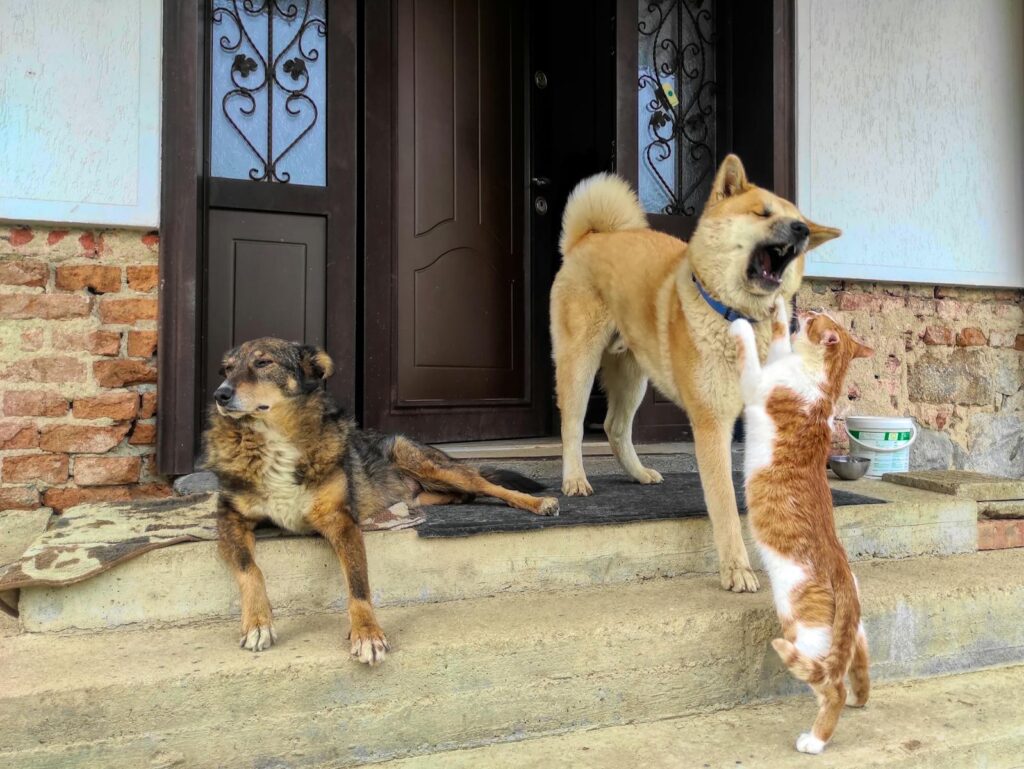Hey there, dog lovers! Ever noticed how your four-legged friend seems to choose the narrowest spots in the house, like doorways, to start a playful wrestling match? While it might seem like an odd choice for a play area, there’s actually some interesting dog psychology behind this behavior. Let’s dig into why your dog might prefer these tight spaces for their roughhousing sessions.
The Thrill of the Chase
One of the main reasons dogs may choose doorways or other tight spaces to play is because of the natural constraints these areas provide. In the wild, canines often chase each other through narrow spaces—think about wolves navigating through dense forests or between rocky outcrops. Doorways mimic these natural pathways, making the chase more exciting and challenging. This can intensify the play session, making it more fun and engaging for your dog.
Safety and Security
Believe it or not, playing in a confined space like a doorway can actually feel safer for some dogs, especially for smaller or more timid canines. The limited escape routes mean they don’t have to worry about being ambushed from behind, and the defined space gives them a clear view of their playmate’s movements. This controlled environment can help reduce anxiety during play, allowing them to focus on the fun.
Establishing Control
For some dogs, especially those with dominant tendencies, playing in a doorway can be a way of testing and establishing control over a territory and their playmate. Doorways are often seen as important territorial boundaries within the home, and controlling this space can be a sign of dominance. By initiating play in a doorway, a dog might be demonstrating their control over the area and by extension, their playmate.
Encouraging Interaction
Dogs are social animals and they often seek interaction with their owners and other pets in the home. Doorways are traffic hotspots in most homes; everyone has to pass through them! By choosing this spot for play, dogs are positioning themselves in the center of the action, ensuring they get plenty of attention and interaction.
How to Manage Rough Play in Doorways
While rough play in doorways is normal dog behavior, it can sometimes lead to accidents or injuries, especially in a busy household. Here are some tips to manage and safely direct this behavior:
- Redirect to a Safer Area: Encourage your dog to play in a more open and safer area of your home where there’s less risk of running into walls or furniture.
- Teach Play Boundaries: Use commands like “not here” or “let’s play outside” to teach your dog where it is appropriate to engage in rough play.
- Provide Adequate Exercise: Often, rough play is a way for dogs to burn excess energy. Make sure your dog is getting enough physical exercise throughout the day.
- Monitor Play Time: Keep an eye on play sessions to ensure they remain safe and fun for all parties involved. Break things up if play seems to be getting too rough or if any of the dogs appear overwhelmed.
Conclusion
Dogs playing rough in doorways or other tight spaces is a natural behavior that can be linked back to their wild instincts. Understanding this behavior can help you better manage playtime and ensure that your home remains a safe space for everyone. By providing appropriate outlets and guidance, you can keep playtime fun and prevent it from getting out of hand.



